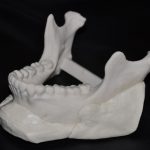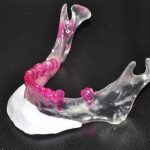The use of implants makes it possible for many cosmetic facial procedures to be done. The mere existence of some of these implants has created new possibilities for facial augmentation. A wide variety of preformed implants of differing materials are available which allows the plastic surgeon to enhance structures as diverse as the temporal regions to the jaw angles. But despite the dozens of implants available, there still remains certain aesthetic facial problems which are not adequately treated by their existing dimensions and sizes.

While this custom approach to unique facial implants is ideal, it adds considerable expense and time to the final cost of the surgery. There are cases where the custom facial implant process can be streamlined and expenses reduced. In this custom approach, a 3-D CT model is still needed and used as a template for implant fabrication. But instead of making a new implant design from scratch, existing preformed implants are used as the ‘templates.’ They are placed on the patient’s 3-D model and carved down to the desired shape before surgery. This then becomes the final implant which is then sterilized for the patient’s surgery.
This modified custom approach obviates the need to have a new implant fabricated, saving presurgical time and cost. In an elective aesthetic facial case, however, time is not as important as cost. This concept only works when the size of the preformed implant is adequate but its shape or adaptation to the desired bone site is insufficient. If the preformed implant is too small, then the custom implant will have to be made in the traditional manner from a clay or silicone elastomer prototype.
I have found that this modification of preformed implant approach is effective for a variety of aesthetic facial situations. For the patient who is just not comfortable with the traditional but ‘blinded’ approach to facial implant augmentation, the 3-D model can help create confidence in the implant selection process. It also allows any minor modifications to the implants selected. Where it can be tremendously helpful is in revisional facial implant surgery where the positions of the existing implants are ill-placed, asymmetric or otherwise of inadequate shape.
Dr. Barry Eppley
Indianapolis, Indiana



